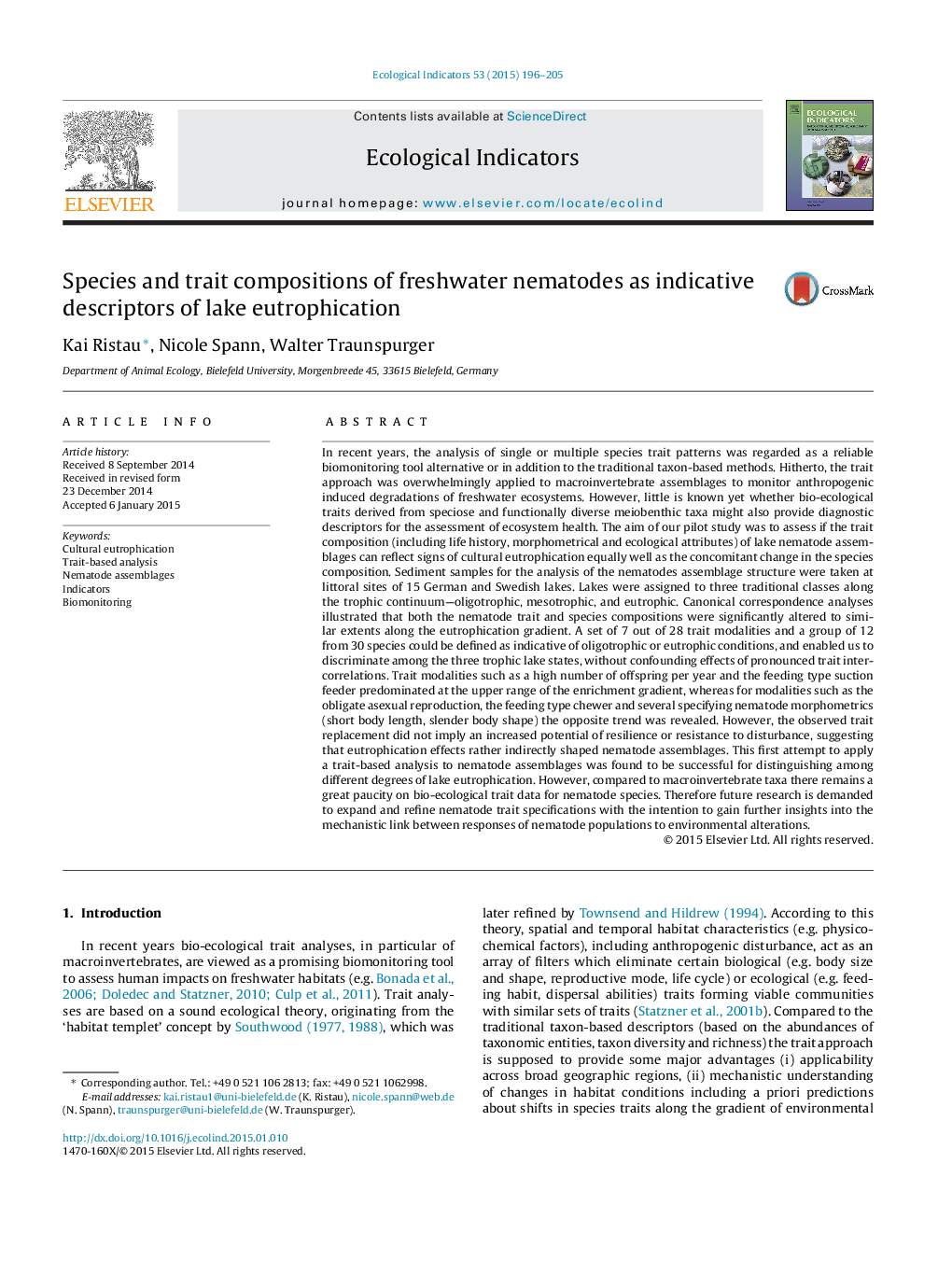| Article ID | Journal | Published Year | Pages | File Type |
|---|---|---|---|---|
| 6294439 | Ecological Indicators | 2015 | 10 Pages |
Abstract
In recent years, the analysis of single or multiple species trait patterns was regarded as a reliable biomonitoring tool alternative or in addition to the traditional taxon-based methods. Hitherto, the trait approach was overwhelmingly applied to macroinvertebrate assemblages to monitor anthropogenic induced degradations of freshwater ecosystems. However, little is known yet whether bio-ecological traits derived from speciose and functionally diverse meiobenthic taxa might also provide diagnostic descriptors for the assessment of ecosystem health. The aim of our pilot study was to assess if the trait composition (including life history, morphometrical and ecological attributes) of lake nematode assemblages can reflect signs of cultural eutrophication equally well as the concomitant change in the species composition. Sediment samples for the analysis of the nematodes assemblage structure were taken at littoral sites of 15 German and Swedish lakes. Lakes were assigned to three traditional classes along the trophic continuum-oligotrophic, mesotrophic, and eutrophic. Canonical correspondence analyses illustrated that both the nematode trait and species compositions were significantly altered to similar extents along the eutrophication gradient. A set of 7 out of 28 trait modalities and a group of 12 from 30 species could be defined as indicative of oligotrophic or eutrophic conditions, and enabled us to discriminate among the three trophic lake states, without confounding effects of pronounced trait intercorrelations. Trait modalities such as a high number of offspring per year and the feeding type suction feeder predominated at the upper range of the enrichment gradient, whereas for modalities such as the obligate asexual reproduction, the feeding type chewer and several specifying nematode morphometrics (short body length, slender body shape) the opposite trend was revealed. However, the observed trait replacement did not imply an increased potential of resilience or resistance to disturbance, suggesting that eutrophication effects rather indirectly shaped nematode assemblages. This first attempt to apply a trait-based analysis to nematode assemblages was found to be successful for distinguishing among different degrees of lake eutrophication. However, compared to macroinvertebrate taxa there remains a great paucity on bio-ecological trait data for nematode species. Therefore future research is demanded to expand and refine nematode trait specifications with the intention to gain further insights into the mechanistic link between responses of nematode populations to environmental alterations.
Related Topics
Life Sciences
Agricultural and Biological Sciences
Ecology, Evolution, Behavior and Systematics
Authors
Kai Ristau, Nicole Spann, Walter Traunspurger,
